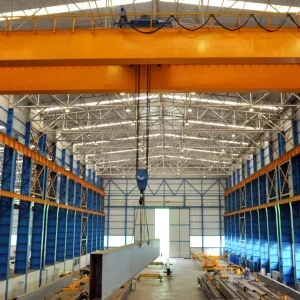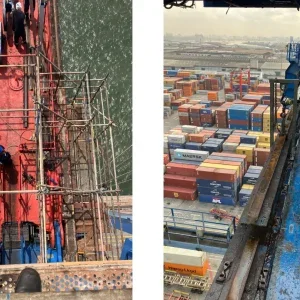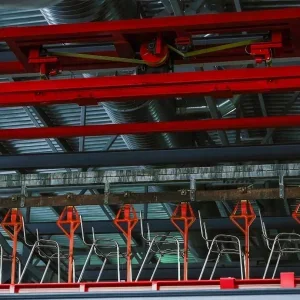“There are three strategies that I have developed from my analysis of the company,” he says. “First, an internal reorganisation of the company to have a more flexible structure to reduce lead times, and to be more flexible for the customer. Second, to source more from eastern Europe and Asia, and third, a country strategy, to apply ourselves to Italy, Spain and Asia.
“We need to be more flexible for the customer in terms of product varieties and to reduce our lead time. We need to be faster in the market. In commodity products, our goal is to have 24 hour delivery times. Now it is higher. For special products, we aim to achieve this by the end of 2006. For all products, it will be the end of 2007.
“We have to invest a lot in IT infrastructure. With the IT we can speed up internal processes. The infrastructure is underdeveloped in the company, and investing in it will reduce costs. We need to reduce our time to market processes, and order to delivery processes and engineering processes.
“For the products, we need to develop more products, and develop them faster in order to be ahead of product coming from the Chinese market. The Chinese people are copying European products and then these designs are coming back into Europe at a lower price. The only strength is to be faster in the product lifecycle than the Chinese.”
Kutschka says that service is not the only issue. Cost-competition is a major issue for commodity products. “Cost is always important,” he says. “We have a good competitive situation. We have to get better.”
Part of that is tapping into Asia’s manufacturing capacity. “Asia is definitely interesting for sourcing. Not only in commodity areas but also in sourcing parts for hoists and lifting and moving equipment,” he says. Currently, the company buys components from China and Europe. Chain hoists and lever blocks are partly made in Europe. Swiss hoist manufacturer GIS supplies complete hoists and “a few” components for electric chain hoists that are assembled in Germany. He says that the company’s alliance with GIS is working well. “Hopefully it will carry on. Probably we will expand our supply of GIS material.”
Chain blocks and lever hoists are a significant part of the business,” he says. “We want to be a full-range supplier – not just pallet trucks and winches. Our strategy is to increase the range of products. We want to be a diversified producer and supplier of these products.
“Fifty percent of our customers are industrial. That is a big proportion of our business, especially commodity products. We also deliver to industrial end users. We have our own catalogue, but we also use other catalogues.”
Kutschka says that he is confident that demand will remain in Europe, despite the flight of manufacturing to low-cost wage economies. “There is a market in Europe. If production moves out to eastern Europe, there will still be customers here. We have a lot of end customers who work not only in production facilties. Our hoists are working in logistics facilties. I am not afraid of losing the European market.”
“The first five months of the year have been positive. There is definitely growth in the market. On the other hand, there is a country strategy of definitely growing business in eastern Europe and Asia. What we think is that Europe will have a stable and slightly growing market, and an over-average growth in Asia and eastern Europe.
“We export 20% outside of Europe. The basic market is Germany, and then France and Russia, then Italy, Eastern Europe, and the rest of the world. We are planning to put more salespeople in Eastern Europe and Asia. We have subsidiaries in Poland and Hungary, and are planning to establish a subsidiary in Moscow this year.” Kutschka says that the company is planning to open a Chinese export business in 2007 with production, purchasing, quality assurance and a sales department – primarily for actuators. He adds that it has no plans for the Middle East until the longer term – perhaps 2009-2010.
Pfaff will not try to export commodity product for these markets, he says. “I don’t think we would have a chance to sell European-made product to India or China,” he explains. “We will start in these countries by selling solutions, with hoists or winches, such as a theatre, with not only winches and tables delivered, but the entire stage including steelworks engineering.”
He adds: “We have been offering solutions for a number of years. One of our strategies is to increase the number of engineers to offer custom solutions directly to the end customer, close to the market to sell solutions.”
Kutschka explains that the company has two or three engineers in each of the subsidiaries – one focused on actuators, one focused on cranes and lifting, and one on hoists and winches. “And there is backup here in Germany,” he says, “90% of their work is tailoring standard product. The rest is large-scale, 100-hour-per-job engineering work. We definitely have those jobs. We use those jobs to define new products. Out of a customer’s situation, we find out that the market requires new technology. It becomes a part of the product development process.”






